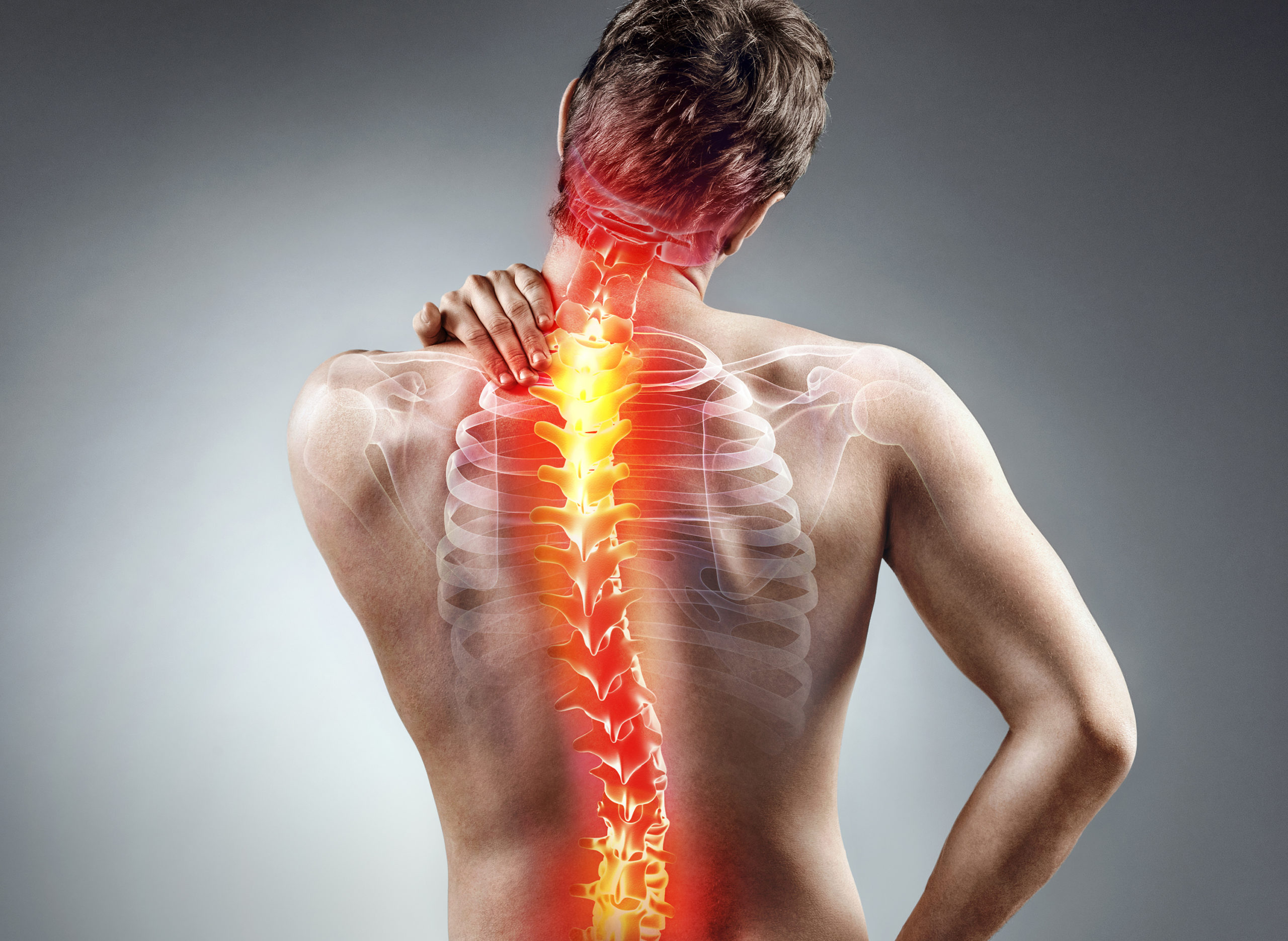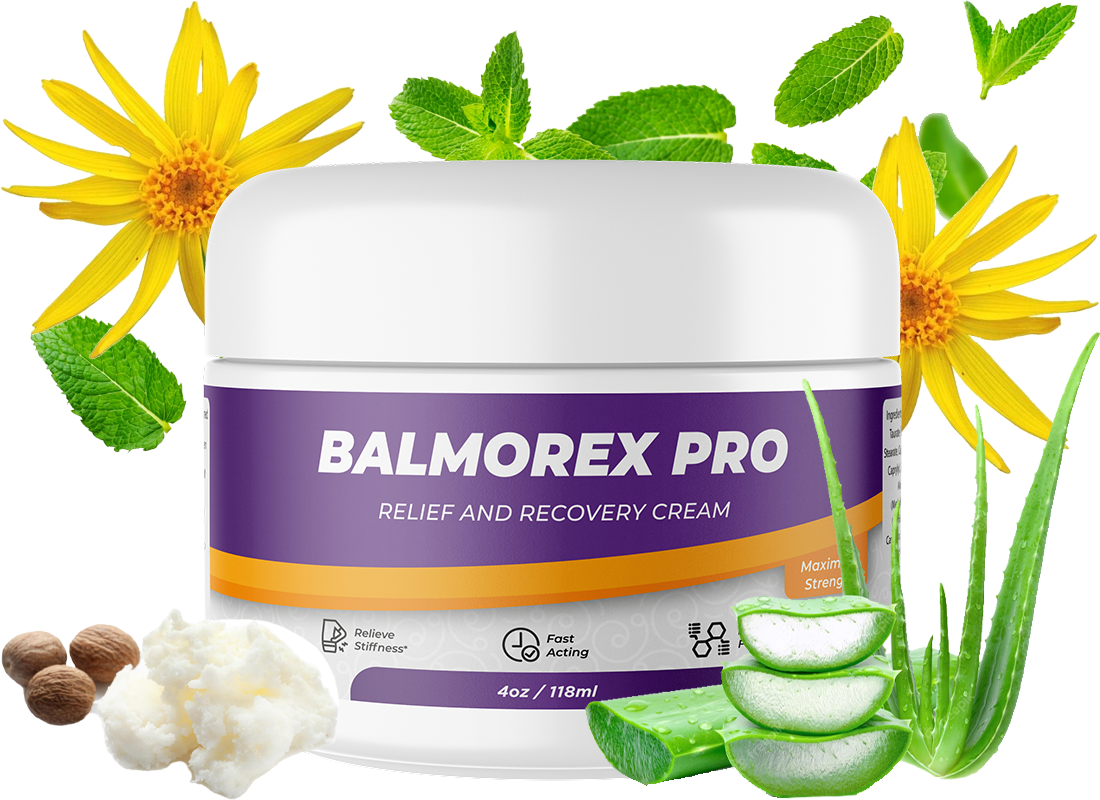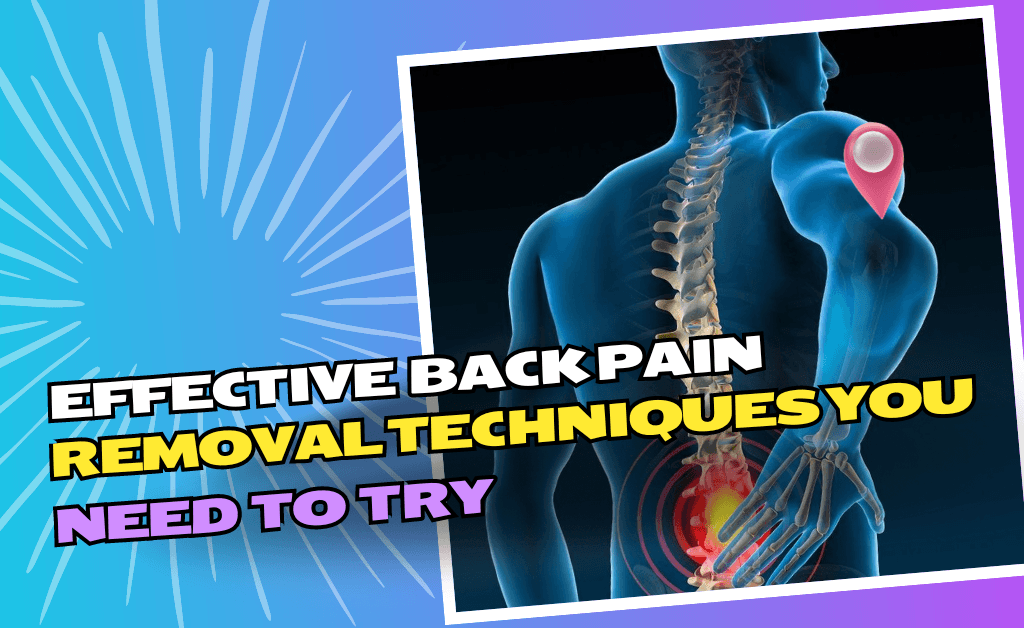Back pain is a common ailment that affects millions of people worldwide. It can significantly impact your quality of life, making it difficult to perform daily tasks and enjoy activities you love. While there’s no one-size-fits-all solution, there are numerous effective techniques available to help alleviate and even back pain removal.
Understanding Back Pain
Before exploring treatment options, it’s essential to understand the different types of back pain and their potential causes. Back pain can be classified into:
- Acute: This type of pain lasts for a few days or weeks.
- Chronic: Chronic back pain persists for more than three months.
- Mechanical: This is caused by issues with the muscles, bones, or joints in the back.
- Neurological: This occurs when nerves in the back are compressed or irritated.
Common causes of back pain include:
- Poor posture: Slouching, sitting for extended periods, and incorrect lifting can strain the back muscles.
- Muscle strain: Overexertion or sudden movements can lead to muscle strains.
- Herniated discs: A herniated disc occurs when the soft center of a spinal disc bulges or ruptures.
- Arthritis: Degenerative conditions like osteoarthritis can cause back pain.
- Other factors: Stress, obesity, and underlying medical conditions can also contribute to back pain.
If you’re experiencing persistent or severe back pain, it’s crucial to consult a healthcare professional for proper diagnosis and treatment.
Non-Invasive Back Pain Removal Techniques
Many effective back pain treatments are non-invasive and can be incorporated into your daily routine. Here are some popular options:
Physical Therapy
Physical therapy is a comprehensive approach that involves exercises, massage, heat therapy, and other techniques to strengthen the back muscles, improve flexibility, and reduce pain. A qualified physical therapist can create a personalized treatment plan based on your specific needs.

Massage Therapy
Massage therapy can help relax muscles, reduce tension, and improve blood flow to the back. There are various types of massage, including deep tissue, Swedish, and trigger point, each with its own benefits.
Yoga and Pilates
Yoga and Pilates are excellent ways to strengthen the back muscles, improve flexibility, and reduce stress. They incorporate gentle movements and breathing techniques that can alleviate pain and promote overall well-being.
Over-the-Counter Pain Relievers
Over-the-counter medications like acetaminophen, ibuprofen, and naproxen can provide temporary relief from mild to moderate back pain. However, it’s essential to follow the recommended dosage and consult a doctor if pain persists.
Lifestyle Modifications for Back Pain Prevention
In addition to seeking professional treatment, making certain lifestyle changes can help prevent and manage back pain. These include:
Ergonomics
Creating an ergonomic workspace is crucial for preventing back strain. Ensure your chair, desk, and computer are positioned correctly to maintain proper posture.
Exercise and Weight Management
Regular exercise can strengthen the back muscles and improve overall health. Focus on exercises that target the core, back, and legs. Maintaining a healthy weight can also reduce stress on the back.
Stress Management
Stress can contribute to back pain. Incorporate stress management techniques like meditation, deep breathing, and relaxation exercises into your daily routine.
Sleep and Rest
Adequate sleep is essential for healing and recovery. Ensure you get enough quality sleep and avoid sleeping on a mattress that is too soft or too hard.
When to See a Doctor
If your back pain is severe, persistent, or accompanied by other symptoms like numbness, tingling, or weakness, it’s important to seek medical attention. A healthcare professional can diagnose the underlying cause and recommend appropriate treatment.
Additional Tips for Back Pain Relief
While the outline and blog post provide comprehensive information on back pain management, here are some additional tips that may be helpful:
Hot and Cold Therapy
- Heat therapy: Applying heat to the affected area can help relax muscles and reduce pain. Use heating pads, warm compresses, or take a warm bath.
- Cold therapy: Applying ice can reduce inflammation and numb pain. Use ice packs or wrap ice in a towel before applying.

Acupuncture
Acupuncture is a traditional Chinese medicine technique that involves inserting thin needles into specific points on the body. It can help alleviate pain and improve overall well-being.
Spinal Decompression Therapy
This non-invasive treatment involves gently stretching the spine to relieve pressure on the spinal discs. It can be beneficial for people with herniated discs or degenerative disc disease.
Mind-Body Techniques
- Meditation: Mindfulness meditation can help reduce stress and promote relaxation, which can benefit back pain management.
- Hypnotherapy: Hypnosis can be used to manage pain and improve overall well-being.
Dietary Considerations
- Anti-inflammatory diet: Consuming foods rich in omega-3 fatty acids, fruits, vegetables, and whole grains can help reduce inflammation.
- Hydration: Staying hydrated is essential for overall health, including back pain management.
Avoid Trigger Activities
Identify activities that exacerbate your back pain and try to avoid or modify them. This may involve adjusting your posture, lifting techniques, or work habits.
Support Devices
- Back braces: Wearing a back brace can provide support and reduce pain, especially during activities that put stress on the back.
- Pillows: Using the right pillow can help maintain proper spinal alignment while sleeping.
Remember, it’s important to consult with a healthcare professional before trying any new treatments or making significant changes to your lifestyle. By combining these strategies with the information provided in the blog post, you can effectively manage back pain and improve your overall quality of life.

Balmorex Pro Complete Support For Healthy Joints, Back and Muscles
Frequently Asked Questions About Back Pain
Q: What is the most common cause of back pain?
A: The most common cause of back pain is muscle strain, often resulting from poor posture, lifting heavy objects incorrectly, or sudden movements.
Q: When should I see a doctor for back pain?
A: If your back pain is severe, persistent, or accompanied by other symptoms like numbness, tingling, or weakness, it’s important to consult a healthcare professional.
Q: Can I prevent back pain?
A: Yes, you can take steps to prevent back pain by maintaining good posture, exercising regularly, lifting objects correctly, and managing stress.
Q: Is back pain a sign of a serious condition?
A: While most cases of back pain are not serious, it’s essential to consult a doctor to rule out any underlying medical conditions.
Q: What are some home remedies for back pain?
A: Home remedies for back pain include applying heat or cold therapy, resting, taking over-the-counter pain relievers, and stretching.
Q: Can I do yoga or Pilates if I have back pain?
A: Yes, yoga and Pilates can be beneficial for back pain management when performed correctly and under the guidance of a qualified instructor.
Q: How long does back pain typically last?
A: Back pain can last for a few days or weeks (acute) or become chronic if it persists for more than three months.
Q: Can I lift weights if I have back pain?
A: It’s generally recommended to avoid heavy lifting if you have back pain. However, with proper guidance from a healthcare professional or physical therapist, you may be able to incorporate light weight training into your rehabilitation plan.
Q: Is there a cure for back pain?
A: While there may not be a permanent cure for back pain, many effective treatments are available to manage symptoms and improve quality of life.
Q: Can stress cause back pain?
A: Yes, chronic stress can contribute to muscle tension and pain in the back. Effective stress management techniques can help alleviate back pain.


